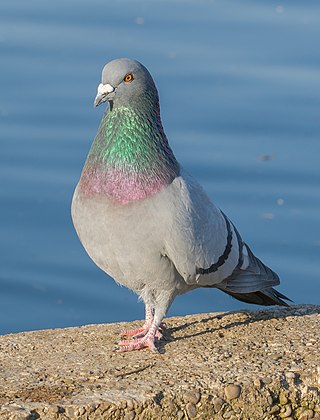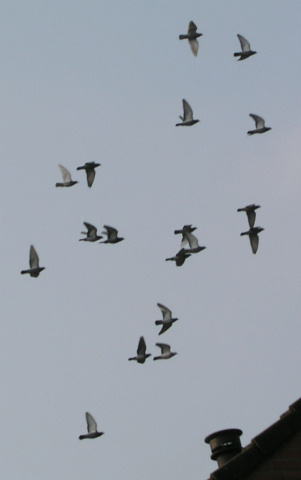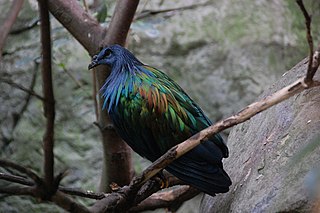
A release dove is usually a small white domestic rock dove used for events such as public ceremonies, weddings and funerals. They typically have a symbolic meaning for the event.

A release dove is usually a small white domestic rock dove used for events such as public ceremonies, weddings and funerals. They typically have a symbolic meaning for the event.

Typically one or more white doves are released. Sometimes doves are called pigeons, there is no distinction. [1] Usually domestic rock doves ( Columba livia domestica ) bred for small size and white coloration are released due to their homing ability. [2] [3] [4]
Barbary doves (Streptopelia risoria), also known as ringneck doves, carry a mutation that makes them completely white. These white Barbary doves are most commonly used in stage magic acts. White Barbary doves are sometimes released in large public ceremonies as a peace symbol, and at weddings and funerals. However, releases usually use homing pigeons, as Barbary doves lack the homing instinct and will die if released into the wild.

Albinism or other genetic anomalies that produce an entirely white dove occur very rarely in the wild since an all-white coloration would make these birds stand out in their natural habitats, leaving them highly vulnerable to predators. [5]
Pigeon breeds used for dove release services are chosen for their color and small size, not for their homing abilities or flight speed. Although dove release businesses advertise that their birds will be able to safely return home, released doves are frequently killed in accidents or by predators before they can return home. [6] Trained white homing pigeons, domesticated forms of the rock dove, stand a better chance of returning home if vigorously trained prior to release by a trainer and within a distance of 600 miles from the loft. Ringneck doves that are released into the wild and survive will likely starve to death. [7]

Increased public awareness about animal cruelty, and the influx of injured or lost release doves in animal shelters is decreasing the demand for release dove services. [6]
In The Epic of Gilgamesh, an epic poem from ancient Mesopotamia, a flood narrative is present, where the character Utnapishtim sends out a dove in the hope it will find land. However, the dove returns to his ship and he assumes it did not find land.
The release of doves is associated with the Genesis flood narrative; where a dove is sent out three times as the flood waters are receding. [8]
The use of a dove and olive branch as a symbol of peace originated with the early Christians, who portrayed the act of baptism accompanied by a dove holding an olive branch in its beak and also used the image on their sepulchres.
The ritual of releasing doves in the Olympic games originated in 1896. [9] The doves in the 1896 Olympics were released as part of the closing ceremony; the ritual became an official part of the opening ceremony in the 1920 Antwerp games. The ritual was altered to be purely symbolic after the doves released in the 1988 Seoul Olympics landed on the Olympic Torch and were burnt alive when it was lit. [10] At the Olympics 2021, in Tokyo, a thousand paper doves were used instead of real birds. [11]
In 2004, Pope John Paul II released doves, with children, to promote Christian unity and world peace. [12]
In 2005, Pope John Paul II started a yearly January tradition of children releasing doves from a window to promote world peace. [13] [14] The practice was problematic due to the birds not flying away and returning to the window 2005, [13] 2012. [13] At some releases the doves were attacked by other birds, a seagull in 2013, [15] [16] and a seagull and a crow in 2014. [17] [14] [18]
In December 2013, at an event where Pope Benedict XVI released doves during a Holocaust remembrance event the birds were attacked by a seagull. [19] [20]
Since 2015, The Vatican no longer engages in the releasing doves due to the problems of birds not flying away and being attacked by other birds. The notoriety of this event generated a public outcry for the Vatican to halt this practice. A balloon release has been used instead in 2015 [15] and 2018. [21]

Cher Ami was a male homing pigeon who had been donated by the pigeon fanciers of Britain for use by the U.S. Army Signal Corps in France during World War I and had been trained by American pigeoners. He is famous for delivering a message from an encircled battalion despite serious injuries during the Meuse-Argonne offensive in October 1918.

Columbidae is a bird family consisting of doves and pigeons. It is the only family in the order Columbiformes. These are stout-bodied birds with short necks and short slender bills that in some species feature fleshy ceres. They primarily feed on seeds, fruits, and plants. The family occurs worldwide, but the greatest variety is in the Indomalayan and Australasian realms. The family contains 344 species divided into 50 genera. Thirteen of the species are extinct.

The rock dove, rock pigeon, or common pigeon is a member of the bird family Columbidae. In common usage, it is often simply referred to as the "pigeon".

The homing pigeon, also called the mail pigeon or messenger pigeon, is a variety of domestic pigeons derived from the wild rock dove, selectively bred for its ability to find its way home over extremely long distances. The rock dove has an innate homing ability, meaning that it will generally return to its nest using magnetoreception. Flights as long as 1,800 km have been recorded by birds in competitive pigeon racing. Their average flying speed over moderate 965 km distances is around 97 km/h and speeds of up to 160 km/h have been observed in top racers for short distances.

Pigeon racing is the sport of releasing specially trained homing pigeons, which then return to their homes over a carefully measured distance. The time it takes the animal to cover the specified distance is measured and the bird's rate of travel is calculated and compared with all of the other pigeons in the race to determine which animal returned at the highest speed.

The Eurasian collared dove is a dove species native to Europe and Asia; it was introduced to Japan, North America and islands in the Caribbean.

The Barbary dove, ringed turtle dove, ringneck dove, ring-necked turtle dove, or ring dove is a domestic member of the dove and pigeon family (Columbidae).

The Nicobar pigeon or Nicobar dove is a bird found on small islands and in coastal regions from the Andaman and Nicobar Islands, India, east through the Indonesian Archipelago, to the Solomons and Palau. It is the only living member of the genus Caloenas alongside the extinct spotted green pigeon, and is the closest living relative of the extinct dodo and Rodrigues solitaire.

Homing pigeons have long played an important role in war. Due to their homing ability, speed, and altitude, they were often used as military messengers. Carrier pigeons of the Racing Homer breed were used to carry messages in World War I and World War II, and 32 such pigeons were presented with the Dickin Medal. Medals such as the Croix de Guerre, awarded to Cher Ami, and the Dickin Medal awarded to the pigeons G.I. Joe and Paddy, amongst 32 others, have been awarded to pigeons for their services in saving human lives.

The pied imperial pigeon is a relatively large, pied species of pigeon. It is found in forest, woodland, mangrove, plantations and scrub in Southeast Asia, ranging from Myanmar and Thailand, throughout Indonesia and east to the Philippines and the Bird's Head Peninsula in New Guinea. It is mainly found on small islands and in coastal regions. It remains locally common, and is therefore considered to be of least concern by BirdLife International and IUCN.
Fancy pigeon refers to any breed of domestic pigeon, which is a domesticated form of the wild rock dove. They are bred by pigeon fanciers for various traits relating to size, shape, color, and behavior, and often exhibited at pigeon shows, fairs and other livestock exhibits.

Valiant is a 2005 computer-animated comedy film produced by Vanguard Animation, Ealing Studios and Odyssey Entertainment, and released by Entertainment Film Distributors in the United Kingdom on March 25, 2005, and by Walt Disney Pictures in the United States on August 19, 2005. Set in May of the year 1944, it tells the story of a group of war pigeons during World War II. The film is based on a story by George Webster, and inspired by true stories of hundreds of pigeons that helped the soldiers in the war.
The tippler is a breed of domestic pigeon bred to participate in endurance competitions. Flying results of up to 22 hours (non-stop) have been reported.

Pigeon post is the use of homing pigeons to carry messages. Pigeons are effective as messengers due to their natural homing abilities. The pigeons are transported to a destination in cages, where they are attached with messages, then the pigeon naturally flies back to its home where the recipient could read the message. They have been used in many places around the world. Pigeons have also been used to great effect in military situations, and are in this case referred to as war pigeons.

The domestic pigeon is a pigeon subspecies that was derived from the rock dove or rock pigeon. The rock pigeon is the world's oldest domesticated bird. Mesopotamian cuneiform tablets mention the domestication of pigeons more than 5,000 years ago, as do Egyptian hieroglyphics. Research suggests that domestication of pigeons occurred as early as 10,000 years ago.

Pigeon keeping or pigeon fancying is the art and science of breeding domestic pigeons. People have practiced pigeon keeping for at least 5,000 years and in almost every part of the world. In that time, humans have substantially altered the morphology and the behaviour of the domesticated descendants of the rock dove to suit their needs for food, aesthetic satisfaction and entertainment.

The Andaman wood pigeon is a species of bird in the family Columbidae. It is endemic to the Andaman and Nicobar Islands in India. Classified as 'near threatened' by the IUCN, its population is estimated as between 2,500 and 10,000 mature individuals.

The hill pigeon, eastern rock dove, or Turkestan hill dove is a species of bird in the family Columbidae.

Doves, typically domestic pigeons white in plumage, are used in many settings as symbols of peace, freedom, or love. Doves appear in the symbolism of Judaism, Christianity, Islam and paganism, and of both military and pacifist groups.